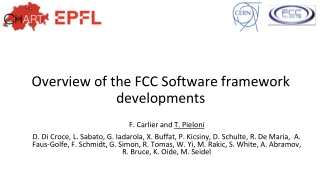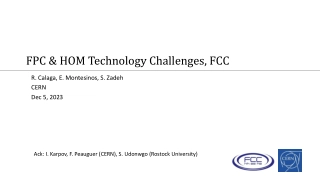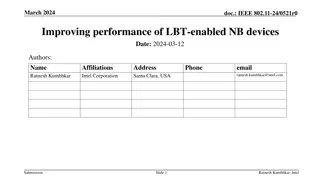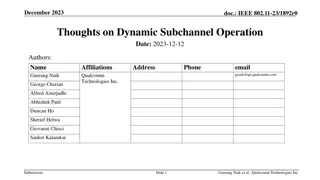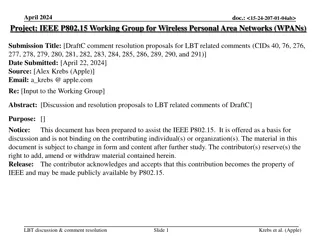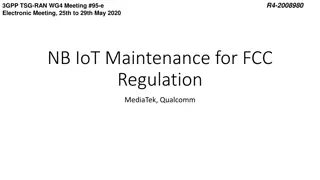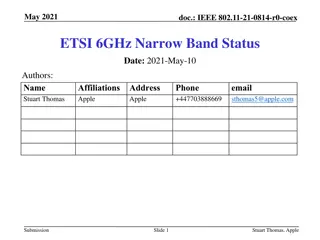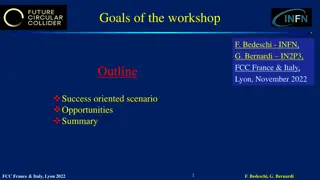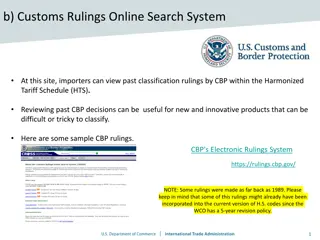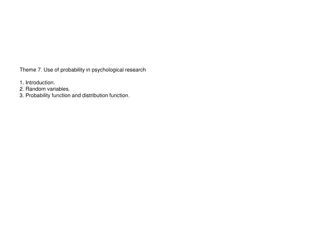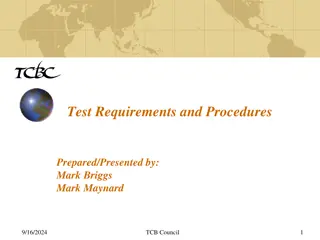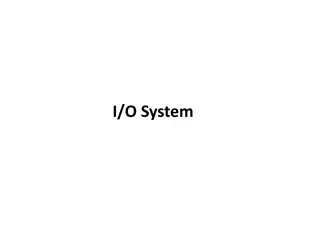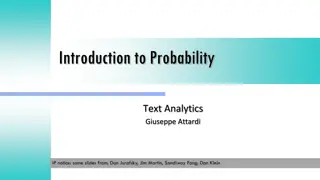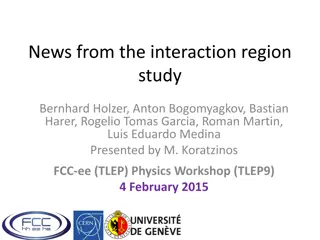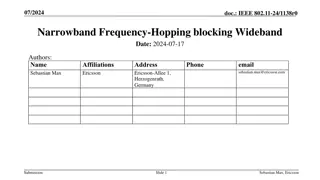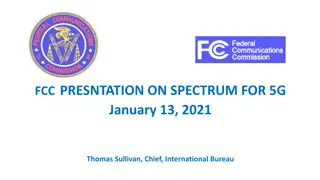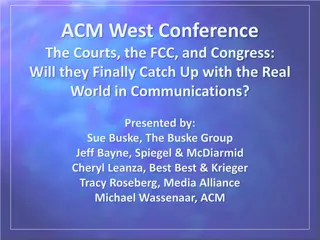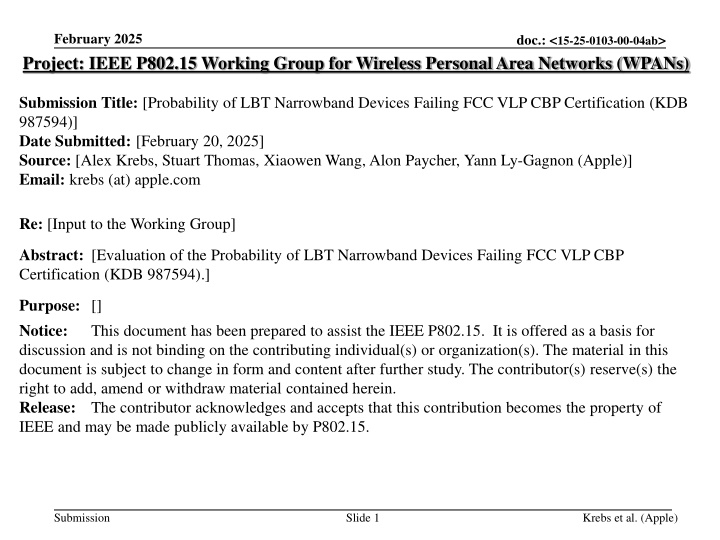
Evaluation of Probability for LBT Narrowband Devices Failing FCC VLP CBP Certification
Dive into the evaluation of the likelihood of LBT narrowband devices failing FCC VLP CBP certification with insights from Apple contributors. Explore issues related to non-compliance and sensitivity requirements for FCC certification in wireless personal area networks.
Download Presentation

Please find below an Image/Link to download the presentation.
The content on the website is provided AS IS for your information and personal use only. It may not be sold, licensed, or shared on other websites without obtaining consent from the author. If you encounter any issues during the download, it is possible that the publisher has removed the file from their server.
You are allowed to download the files provided on this website for personal or commercial use, subject to the condition that they are used lawfully. All files are the property of their respective owners.
The content on the website is provided AS IS for your information and personal use only. It may not be sold, licensed, or shared on other websites without obtaining consent from the author.
E N D
Presentation Transcript
February 2025 Project: IEEE P802.15 Working Group for Wireless Personal Area Networks (WPANs) doc.: <15-25-0103-00-04ab> Submission Title: [Probability of LBT Narrowband Devices Failing FCC VLP CBP Certification (KDB 987594)] Date Submitted: [February 20, 2025] Source: [Alex Krebs, Stuart Thomas, Xiaowen Wang, Alon Paycher, Yann Ly-Gagnon (Apple)] Email: krebs (at) apple.com Re: [Input to the Working Group] Abstract: [Evaluation of the Probability of LBT Narrowband Devices Failing FCC VLP CBP Certification (KDB 987594).] Purpose: [] Notice: discussion and is not binding on the contributing individual(s) or organization(s). The material in this document is subject to change in form and content after further study. The contributor(s) reserve(s) the right to add, amend or withdraw material contained herein. Release: The contributor acknowledges and accepts that this contribution becomes the property of IEEE and may be made publicly available by P802.15. This document has been prepared to assist the IEEE P802.15. It is offered as a basis for Submission Slide 1 Krebs et al. (Apple)
February 2025 doc.: <15-25-0103-00-04ab> PAR Objective Safeguards so that the high throughput data use cases will not cause significant disruption to low duty-cycle ranging use cases Interference mitigation techniques to support higher density and higher traffic use cases Other coexistence improvement Backward compatibility with enhanced ranging capable devices (ERDEVs) Improved link budget and/or reduced air-time Additional channels and operating frequencies Improvements to accuracy / precision / reliability and interoperability for high-integrity ranging Reduced complexity and power consumption Hybrid operation with narrowband signaling to assist UWB Enhanced native discovery and connection setup mechanisms Sensing capabilities to support presence detection and environment mapping Low-power low-latency streaming Higher data-rate streaming allowing at least 50 Mbit/s of throughput Support for peer-to-peer, peer-to-multi-peer, and station-to- infrastructure protocols Infrastructure synchronization mechanisms Proposed Solution (how addressed) Proof of NB LBT FCC non-compliance Submission Slide 2 Krebs et al. (Apple)
February 2025 doc.: <15-25-0103-00-04ab> KDB 987594 (VLP CBP) Narrowband Test Signal Sampling CCA bandwidth 2 MHz 10 MHz 20 MHz Probability of failure at EDT = 76 dBm/MHz (1dB margin) 8% 0% 40% EDT sensitivity required for FCC compliance (non-coherent) [dBm/MHz] 77 75 89 Submission Slide 3 Krebs et al. (Apple)
February 2025 doc.: <15-25-0103-00-04ab> Conclusion A consideration has been made that LBT narrowband devices will fail FCC CBP VLP certification KDB 987594 requires 90% detection of a 72 dBm/MHz AWGN random carrier test signal PSD in 2 MHz CCA/EDT 75 dBm/MHz upper bounds detection probability at 55% CCA/EDT sensitivity theoretically required to pass test is 24 dB below 20 MHz 802.11 WLAN EDT difficult to achieve even in conducted test lab environment, practically impossible to deploy for radiated operation even if there were no noise floor, a 24 dB EDT offset to 20 MHz wideband VLP devices would effectively eliminate spectrum access for NB devices in the presence of 802.11 WLAN Without regulatory changes, narrowband LBT device operation in 6-8GHz UNII bands is non-permissible in FCC regulatory domain Submission Slide 4 Krebs et al. (Apple)

